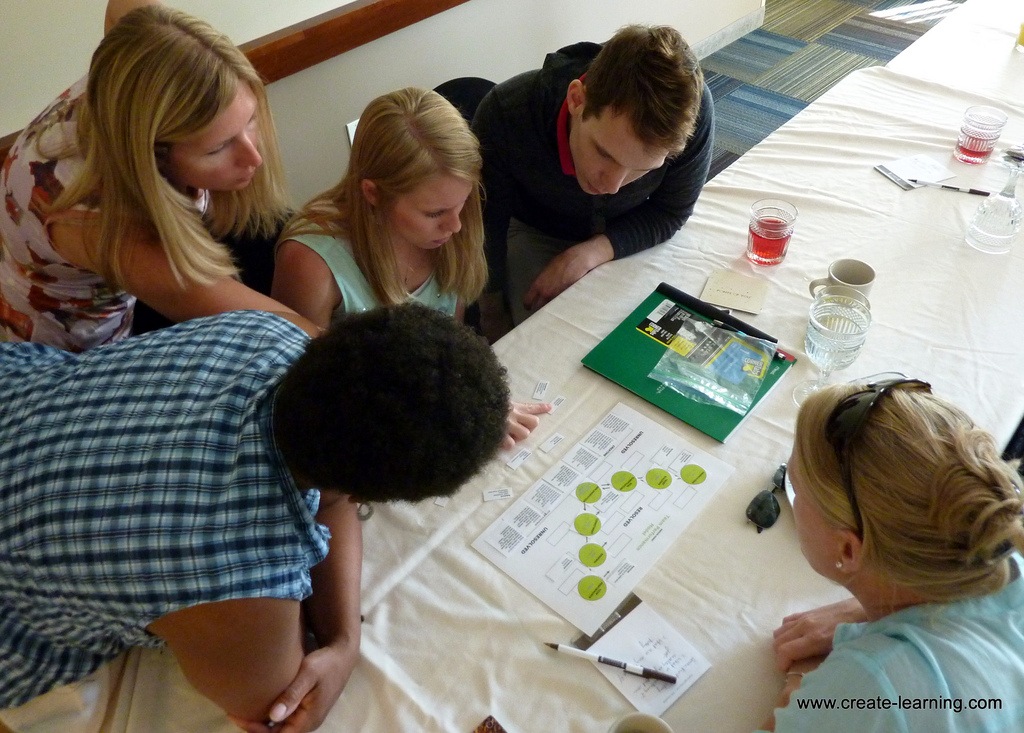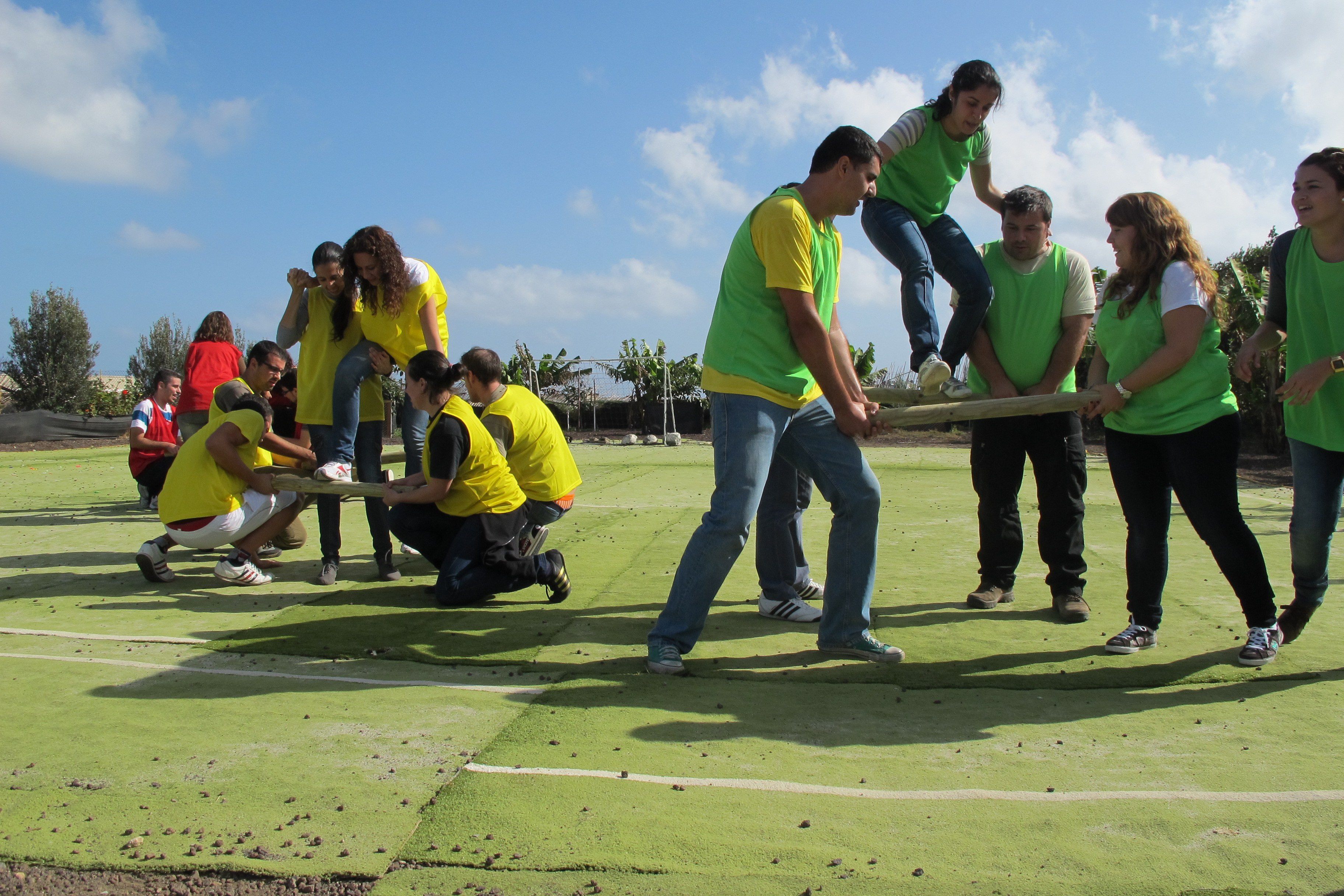Do Team Building Exercises Really Work?

Mention “team building” and a lot of people roll their eyes.
To many, team building feels like corporate-y, buzzword-laden nonsense that makes everyone feel uncomfortable and gets in the way of actual work. According to Citrix, 31% of office workers “say they dislike team-building activities.”
But there has to be something to it. After all, American companies sent $46 billion to team building firms in 2012.
In some SaaS departments, employees can work in isolated units. The customer support specialists respond to tickets on their own. The developers spend weeks in coding sprints. Customer success, however, requires a cohesive team.
The truth is that many team building exercises can have value. They can improve a team’s performance. The reason they often fail is because they are run poorly.
What can team building do for your company?
First, let’s talk about why companies bother with team building at all.
1. Improved communication
Naturally, inter-team communication is important. According to an MIT study, predicting a team’s success comes down to communication. “With remarkable consistency, the data confirmed that communication indeed plays a critical role in building successful teams. In fact, we’ve found patterns of communication to be the most important predictor of a team’s success.”
CS teams need to work together to solve tomorrow’s problem before it happens, otherwise you spend all of your time putting out fires. Team building creates a safer environment for expressing new ideas.
2. Improved employee motivation
Employees who know that their ideas will be taken seriously and that their role in the team matters will be more motivated to produce better work. They’ll work harder because they’ll be proud to be part of something.
The American Psychological Association reports that team building makes employees feel valued, and valued employees are motivated.
3. Improved problem-solving
We can get bogged down in our day-to-day routines and become stuck in the usual. Proper team building puts you in situations that require strategic solutions. These situations will ignite creativity and open the doors for new ideas.
4. Fewer walls between people
Often there’s a gap between team members, between teams, and between employees and management. For instance, the customer success team won’t support sales because they never interact with those people. Team building increases trust and brings people together.
Identify what you want to improve

Source: Michael Cardu/Flickr
Team building includes a variety of exercises, but they aren’t all equal. Before you choose the type of team building event you’ll host, you have to identify why you’re team building in the first place.
What’s the goal of your team building exercises? What qualities do you want to strengthen in your team?
Team building often doesn’t work because managers can’t answer those questions. They hear that “trust falls improve teamwork” but they don’t know why or if that’s even something they need.
A study by Small Group Research looked at other studies between 1950 and 2007. They found that team building has positive, measurable effects on performance, but only when the activities serve the purpose of the exercise.
The first step in team building is to identify the challenges that your team faces. Before you schedule activities, consider what you’re trying to achieve.
Are there conflicts between team members? Is communication poor? Are people focused on their own success instead of the team’s success? Do they solve problems poorly? Are they using their strengths improperly?
Once you know what needs to improve, you can schedule activities that address those deficiencies.
Competitive team building misses the point

The goal of team building is to create a more cohesive, effective team. Then why do so many organizations push team building activities that force teammates to compete with one another?
Honestly, I have no idea.
“Competition = instant passion,” says workplace happiness coach Alexander Kjerulf. He continues to explain that “setting up a competition activates a primal urge in many people to win at all costs, making them very focused and active – which looks great to the organizers. But there’s a huge downside to this – which means that not only are many team building events a huge waste of time, they can be actively harmful to teams.”
In customer success (and all teams, truthfully), we do not want teammates competing. We want them supporting each other, not undermining each other’s work. We don’t want Kathy ignoring Jim’s emails because he threw a dodgeball too hard.
We want teams to cross-communicate as well, instead of building silos. Sales and customer success should blend together. As should customer support, account management, marketing, etc.
Instead of competing, teams should work together. Employee communications consultant Shel Holtz makes this point nicely. “Did you ever wonder why sports teams don’t go out on team-building exercises? It’s because they bond as a team through the very act of being a team.”
If you want to work on your team dynamics, use exercises that make people work together. Activities should include problem-solving, identifying and using strengths, and plenty of communication. Success in the activity should be mutual success.
Confusing “team building” with “fun”

Source: Michael Cardus/Flickr
Rock climbing, zip lining, go-kart racing…These activities are certainly fun (and having fun with coworkers does improve relationships), but they don’t build teams. They don’t teach people how to work together, achieve goals, and play to one’s strengths. All they do is create a shared positive experience, which doesn’t provide any tools for when a big customer is threatening to cancel or when you’re brainstorming ways to increase renewals.
Furthermore, many people don’t even like these activities. They like fun, but not everyone is comfortable role playing, pool games, or otherwise being singled out. You can actually damage your work environment by forcing people into situations they didn’t sign up for and/or directing activities that widen existing gaps between people (see above: competition).
Make sure your team build exercises provide actionable skills that apply to the job.
Your results may vary
Proper team building hinges on the honest cooperation of the participants. If employees and management feel like the exercises are a joke, they’ll have the same effect – a bit of laughter without any change in the team’s dynamic.
Team building doesn’t have to be elaborate. You don’t need to take your entire staff on a two-week retreat in the mountains. You can host exercises in your own office.
Your team building exercises should address most of this criteria:
- It should foster a deeper understanding between teammates
- Teammates should like each other more after the exercises
- It should have common goals for participants, not competing goals
- It should foster an increased desire to work together
- It should offer specific lessons that apply to the work you do
- The exercises should reward those who work together
- Participants have an opportunity to reflect on what they learned
- Everyone should feel the time was well spent
Make sure the team leader plays a role in the team building as well. If the team participates in an exercise without the leader, you can actually create a wider gap than there was originally.
Most importantly, implement team building exercises that drive toward your goals. If you want your team to communicate better, play communication games. If you want them to generate more/better ideas, play creative games. If you want them socialize and become closer, take them to happy hour.
Have you ever participated in team building? What was the best or worst game you played?
